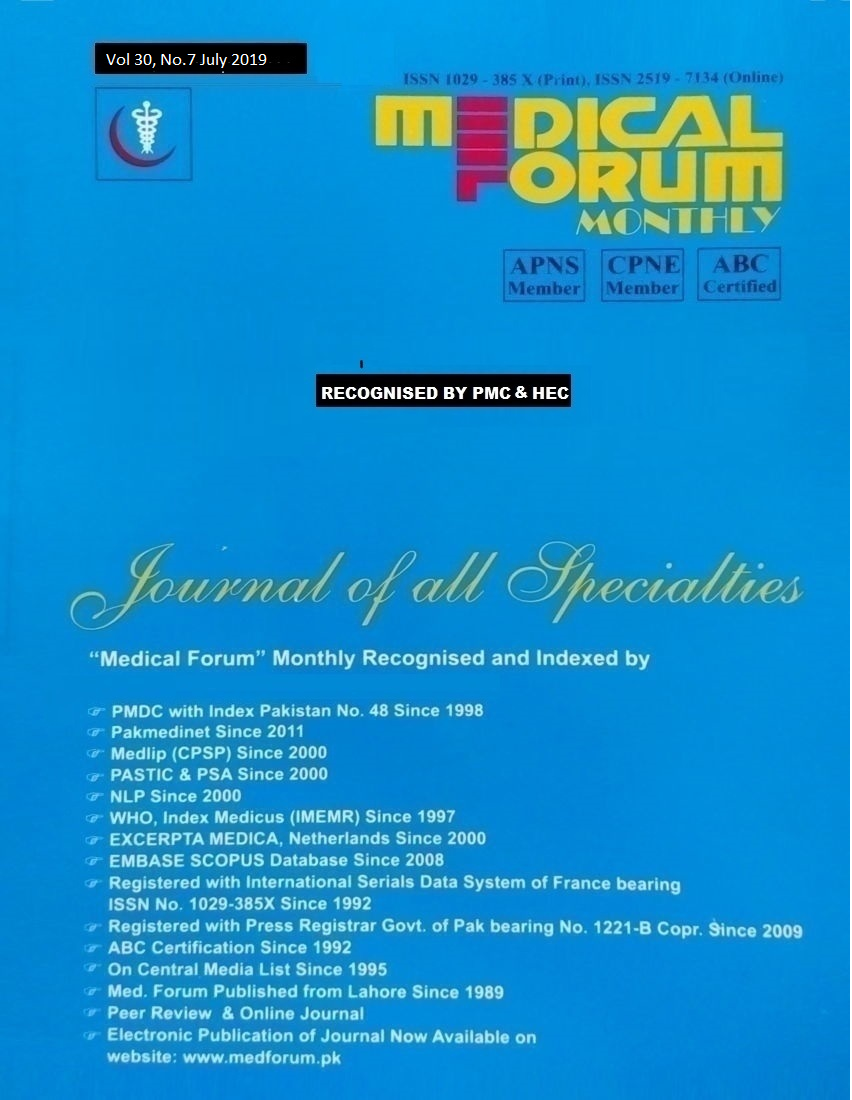
13. Possible Routes of Transmission/Risk Factors of Hepatitis-C Virus in Urban and Rural Areas
Marifat Shah
ABSTRACT
Objective: The objective of this study was to determine the possible routes of transmission of hepatitis C virus and to compare routes of transmission of hepatitis C between urban and rural areas.
Study Design: Descriptive / cross sectional study
Place and Duration of Study: This was conducted at the Jinnah Teaching Hospital attached to Jinnah Medical College, Peshawar from October, 2017 to December 2018
Materials and Methods: This study was conducted on 100 consecutive patients. Participants were diagnosed for hepatitis C by suggesting Anti-HCV antibody through immune chromatographic technique (ICT) followed by ELISA and PCR (qualitative) to confirm and abdominal ultrasound to detect ascites or any hepatic parenchymal change or focal hepatic mass. Patient’s names, age, sex, marital status, address (rural and urban) and possible routes of transmission/risk factors were recorded. Descriptive statistics were calculated in SPSS 20.0. Comparison was made for possible routes of transmission/risk factors of Hepatitis C between rural and urban using chi-square test. P-value![]() 0.05 was considered significant.
0.05 was considered significant.
Results: Males were 40(40%) and female were 60(60%). The mean age was 41.78±14.19years. The most common routes of transmission of Hepatitis C were surgical procedures and skin piercing n=32(32%) followed by surgical procedures n=31(31%). Only skin piercing, surgical procedures for orodental and gynecological reasons, surgical procedures and blood transfusions were found in 11%, 7% and 8% cases respectively. Skin piercing as a possible route of transmission of Hepatitis C was more in rural areas (30%) than urban (13%). Similarly oro-dental/gynecological procedures were more in rural (4%) than urban (3%). On other hand surgical procedures as a risk factor for Hepatitis C was more in urban (18%) than rural (13%). Invasive medical procedures were also common in urban (3%) than rural (1%). All these results were statistically significant (P=0.008).
Conclusion: The major risk factors/possible routes of transmission of hepatitis C were surgical procedures followed by skin piercing by injection needles and least risk factors were invasive medical procedures. Skin piercing and orodental/gynecological procedures to be a possible routes of transmission of Hepatitis C were more in rural areas than urban areas. On other hand surgical procedures and invasive medical procedures were more in urban than
rural areas.
Key Words: Hepatitis C, route of transmission, risk factor, rural, urban
Citation of articles: Shah M. Possible Routes of Transmission/Risk Factors of Hepatitis-C Virus in Urban and Rural Areas. Med Forum 2019;30(7):50-53.
